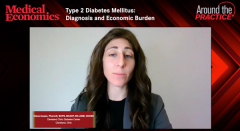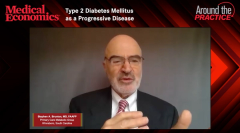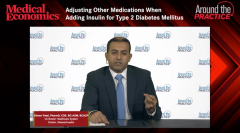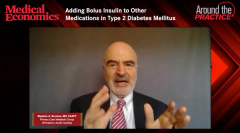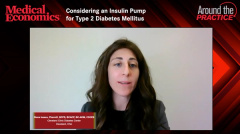
Type 2 Diabetes Mellitus: Diagnosis and Economic Burden
Episodes in this series

Dhiren Patel, PharmD, CDE, BC-ADM, BCACP: Dr Isaacs, can you can walk us through the diagnostic process for the patients we’re looking at screening as it pertains to diabetes?
Diana Isaacs, PharmD, BCPS, BCACP, BC-ADM, CDCES: I’d be happy to. We can pick it up on routine lab screening. What we’re looking for is a fasting blood glucose, and that would be after no food or drink for 8 hours with a value of at least 126 mg/dL or greater. We can also check through a hemoglobin A1C [glycated hemoglobin], and we’d be looking for 6.5% or higher. You can also do a 2-hour oral glucose tolerance test with 75 g of glucose, and we’re looking for a glucose level of 200 mg/dL or higher.
We would usually want to have at least 2 tests. We would want a repeat or have 2 values that are above the diagnostic threshold to make that formal diagnosis. The other way we can diagnose is if someone has clear symptoms of diabetes and hyperglycemia. That could be polyurea or polydipsia. It could also be being hospitalized with diabetic ketoacidosis. With that, in addition to a glucose of over 200 mg/dL, you can make the diagnosis right away: You don’t even need to have a second reading.
Stephen A. Brunton, MD, FAAFP: It’s interesting how many of our patients present during a regular CHEM-7 [basic metabolic panel], and we see their glucose is elevated. Ideally, if they have symptoms, then we’ll make their diagnosis early. Frankly, particularly in primary care, it may be incidental diagnosis.
Dhiren Patel, PharmD, CDE, BC-ADM, BCACP: That’s the question I was going to ask. I know about the continuum of diabetes care, Dr Busch and Dr Isaacs, or maybe once the patients progress. Dr Brunton, what are you seeing in primary care? What are your colleagues looking at? Are they doing what you just described? Is it simply a CHEM-7 that gets picked up, or are you seeing patients who are being screened and whether it may be easier to do on an A1C? What are you seeing the majority of your colleagues doing for a diagnostic process?
Stephen A. Brunton, MD, FAAFP: What Diana said is pretty much what is recommended. We’re getting much more aggressive in terms of screening patients, but frankly, a lot of patients don’t come in. When they finally do come in often, it’s often a spouse who is saying, “You haven’t seen the doctor for 17 years. Try to come in.” We find that that’s when it’s the CHEM-7 panel that might give us an elevated incidental glucose, which then prompts us to do further evaluation.
As you mentioned though, there are a lot of patients, about a third of patients, who have diabetes and have not been diagnosed. We have a long way to go to do much more screening.
Dhiren Patel, PharmD, CDE, BC-ADM, BCACP: While you have the microphone, I’m going to ask you another question, Dr Brunton. When we think about this—and you see on a daily basis how many people are walking in and the efforts that we’re doing to make sure we’re catching these things early—generally speaking, what is this economic burden and this downstream effect that we’re seeing? We’re having folks who, as you just described, the wife comes in, and the husband hasn’t been seen for 10 years. What are some of the implications of this unmanaged glucose? What education can we provide to these patients about managing glucose?
Stephen A. Brunton, MD, FAAFP: We talk about the pandemic of COVID-19 [coronavirus disease 2019], but we’ve been watching a pandemic of diabetes that’s been increasing over the decades. It may largely be because of “diabesity.” We’re seeing a change in eating habits, and we’re seeing a change in the morphism, if you will, of the American. I live in the South now, and I didn’t know you could fry a salad until I came to the Carolinas. We see a lot of obesity and a lot of diabetes.
The cost is being estimated at around $327 billion, with a B. Probably about $237 billion of that is direct, but there are also $100 billion in terms of reduced activity. These people get sick, they have MIs [myocardial infarctions] and those sorts of things, and what I find concerning is that about 30% of patients have an A1C above 9%. These are poorly controlled people, and this hasn’t improved over the last 2 or 3 decades. We see a high percentage of patients uncontrolled are going to have a sequelae of diabetes, and we haven’t really improved that.
Newsletter
Stay informed and empowered with Medical Economics enewsletter, delivering expert insights, financial strategies, practice management tips and technology trends — tailored for today’s physicians.

